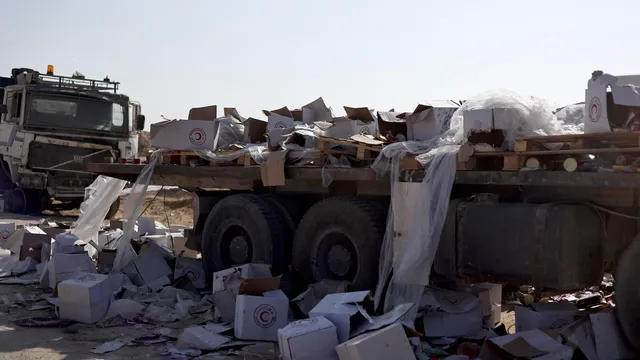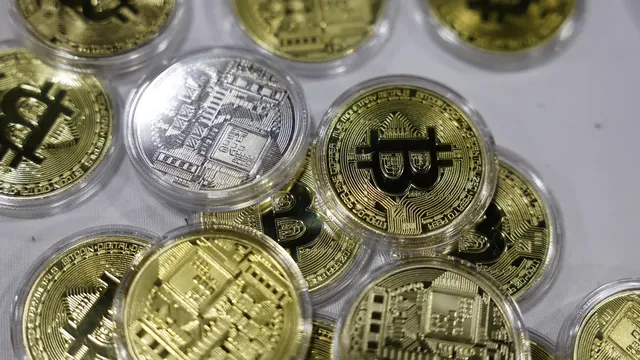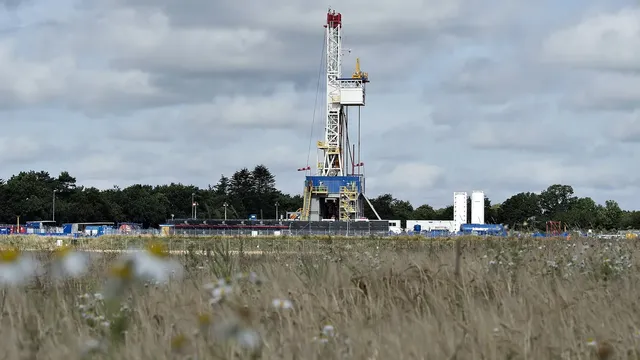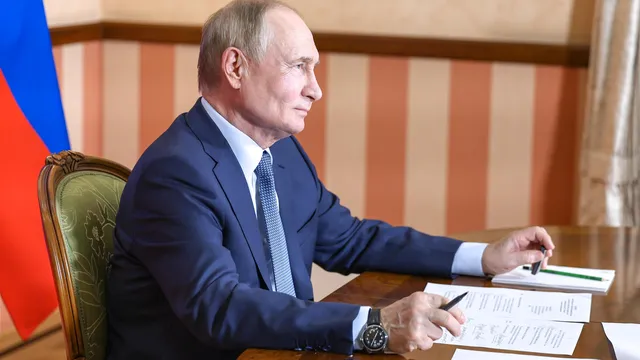The small amount of food that Israel allows into Gaza after nearly 22 months of war is often appropriated by desperate people, looted by gangs or stolen instead of reaching those most in need, the United Nations, aid agencies and analysts warn.
After images of malnourished children sparked an international outcry, aid has begun to arrive again, but on a scale that international organizations say is woefully inadequate. Every day, desperate people run to food convoys or airlifts from Arab and European forces.
In Abu Zawayda, in central Gaza, exhausted Palestinians throw themselves at pallets of food parachuted from planes. The scene is chaotic, dusty and filled with brutal fighting. “Hunger turns people against each other. They fight with knives,” said Amir Zakut, who came to help.
To avoid chaos, World Food Programme (WFP) drivers are instructed to stop before the site and let people pick up their own. But problems remain. “The wheel of the truck almost crushed my head while I was taking out a sack,” said one injured man, carrying a sack of flour on his head in the Zikim area of northern Gaza.
Early in the morning, Mohammad Abu Taha went near Rafah to reserve a place in a line for aid distributions — crowds were already in the thousands. “We heard gunshots… There was nowhere to run. People started running, pushing and shoving children, women, old people,” the 42-year-old said. “The scene was truly tragic: blood, wounded, dead.”
The UN says that since May 27, some 1,400 Palestinians have died while waiting for aid, mostly from gunfire from Israeli soldiers. Israel denies deliberate strikes, saying it only fires warning shots when people approach its positions.
The restrictions imposed by Israeli authorities on aid deliveries — delayed permits, slow customs procedures, limited access points — have drawn criticism for months. In Zikim, the Israeli army, according to the UN, changed WFP loading plans, mixing different types of cargo, leading to an early departure without security.
In southern Gaza, at the Kerem Shalom border, there are two access routes to warehouses in central Gaza. One is safe, the other is often the scene of clashes and looting, but it is the one that is being used by force.
Some of the aid is being looted by gangs and on the black market — traders reselling at inflated prices, according to humanitarian sources. “It’s a social Darwinist experiment of survival of the fittest,” said ECFR’s Mohammad Shehada, describing people forced to wait for a truck in the sun, fighting for a single sack of flour.
Jean-Guy Watteau, a coordinator for Doctors Without Borders, added: “In the system, you see traders and gangs sending children to risk their lives to distribute or to loot. It has become a profession.” The sacks are later sold in Gaza City for more than $400.
Israel has repeatedly accused Hamas of robbing Palestinians to loot aid, and this served as justification for the blockade between March and May, followed by the creation of the Gaza Humanitarian Fund (GHF), funded by Israel and the US and replacing the UN. But for Gaza’s more than two million inhabitants, the GHF has only four distribution points — which the UN describes as a “death trap.”
Israeli authorities say they have found no evidence of systematic aid theft by Hamas. Although the group has been weakened since the Great Defeat, with many of its leaders dead, it remains active through decentralized cells. Some geographic areas in the south – controlled by gangs such as the Bedouin-based Popular Forces – are accused of looting and are supported by Israel.
The civil conflict in Gaza has become an “existential struggle for survival”, in which people are exploited while humanitarian needs continue to increase. | BGNES

 Breaking news
Breaking news
 Europe
Europe
 Bulgaria
Bulgaria







